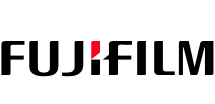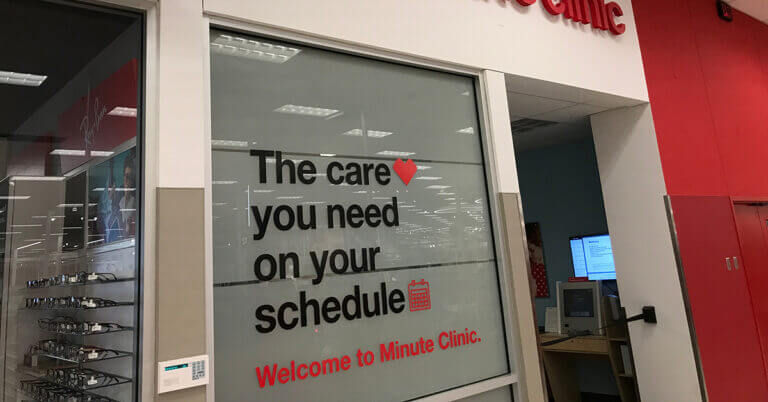August 8, 2018

Belts and Suspenders: Major Healthcare Transactions Position Companies for Whatever Comes Next
During President Richard Nixon’s historic 1972 trip to China, the press asked China’s premier Zhou Enlai to comment on the French Revolution’s impact on world affairs. Zhou famously
replied, “Too early to say.”
For British novelist Charles Dickens, the French Revolution was a period of change and turmoil filled with plenty of evidence for hope and ample cause for despair. As he wrote eloquently in A Tale of Two Cities:
“It was the best of times, it was the worst of times, it was the age of wisdom, it was the age of foolishness, it was the epoch of belief, it was the epoch of incredulity, it was the season of Light, it was the season of Darkness, it was the spring of hope, it was the winter of despair, we had everything before us, we had nothing before us, we were all going direct to Heaven, we were all going direct the other way…”
Americans prefer clean revolutions with clear-cut winners and losers. Unfortunately, there’s enormous uncertainty about the pace, scale, and distribution of U.S. healthcare’s revolutionary transformation. In response, established health companies are getting bigger to withstand competitive pressures, gain capabilities and reconfigure business models.
 A remarkable run of recent merger announcements signals major market shake-up. Mammoth firms like CVS Health, Humana, UnitedHealth Group, Cigna, and Dignity Health don’t make course-changing moves just to follow a trend. Instead, they get out in front of market forces to position for future success.
A remarkable run of recent merger announcements signals major market shake-up. Mammoth firms like CVS Health, Humana, UnitedHealth Group, Cigna, and Dignity Health don’t make course-changing moves just to follow a trend. Instead, they get out in front of market forces to position for future success.
Whether those organizations resemble heroes or villains in healthcare’s transformation narrative depends on perspective. Are they leading a market-driven transformation of American healthcare that will radically improve services for consumers, or are they fortifying themselves to perpetuate the misguided incentives of our current system?
Premier Zhou might say it’s too soon to tell. Dickens would answer it’s both.
BIG MOVES THAT ROCKED HEALTHCARE
It started in December 2017 when a series of blockbuster transaction announcements came out of nowhere to rock the healthcare industry.
1: CVS Health announced its intention to acquire Aetna and its 47 million health insurance subscribers for $69 billion.
The CVS press release said, “The transaction fills an unmet need in the current healthcare system and presents a unique opportunity to redefine access to high-quality care in lower cost, local settings whether in the community, at home, or through digital tools.” [1]
2: Advocate Health Care (Illinois) and Aurora Health Care (Wisconsin) agreed to merge their state-leading health systems to form “the 10th largest not-for-profit, integrated healthcare system in the United States, serving nearly 3 million patients each year.”
Advocate CEO Jim Skogsbergh said, “This merger is about transforming care delivery and reimagining the possibilities of health as bigger meets better and size meets value to benefit consumers.” [2]
3: UnitedHealth Group announced the acquisition of the DaVita Medical Group (DMG) for $4.9 billion. DMG serves 1.7 million patients annually through 30,000 affiliated physicians at roughly 300 medical clinics in 6 states. DMG also operates 35 urgent care clinics and 6 outpatient surgery centers. Once the transaction closes, DMG will operate as part of Optum.
The acquisition will help Optum improve “care quality, cost, and patient satisfaction through integrated ambulatory care delivery systems enabled by information by information technology and supportive clinical services.” [3]
4: Dignity Health and Catholic Health Initiatives (CHI) announced their intention to merge. The combined organization will be massive with 700 care sites, 139 hospitals, 159,000 employees, and 25,000 physicians operating in 28 states. The new organization will strive to create healthier communities.
CHI’s CEO Kevin Lofton said, “We are joining together to create a new Catholic health system, one that is positioned to accelerate the change from sick-care to well-care across the United States.” [4]
5: Humana announced the acquisition of Kindred Healthcare’s home health, hospice and community care businesses. Kindred operates 609 home health, hospice and non-medical home-care sites of service throughout the country. “Kindred at Home” will operate as a stand-alone company and enhance Humana’s ability to manage chronic disease patients more efficiently and effectively.
Humana CEO Bruce Broussard described the move as offering the opportunity to “advance [the company’s] vision for integrated care delivery…while building a transformative platform for the future.” [5]
In 2018, the hits have kept on coming.

6: Amazon, Berkshire Hathaway, and JP Morgan Chase joined forces to create a new healthcare company, causing consternation among traditional players in the healthcare marketplace. The coalition potentially threatens payers, pharmaceutical distributors, retail care providers, and health information technology companies alike. Shares in United Health, Anthem, CVS, and Walgreens all plummeted on the news.
JP Morgan Chase CEO Jamie Dimon noted, “The three of our companies have extraordinary resources, and our goal is to create solutions that benefit our U.S. employees, their families and, potentially, all Americans.” [6] The selection of Atul Gawande as CEO of the new company reinforces ABJ’s intention to address healthcare differently and potentially develop a blueprint for other large employers.
7: Cigna announced that it would acquire pharmacy benefit manager Express Scripts for $67 billion. The combination creates an insurance and PBM with over $120 billion in combined revenue and over 1 billion annual customer touchpoints.
Announcing the merger, Cigna CEO David Cordani said, “Cigna’s acquisition of Express Scripts brings together two complementary customer-centric services companies, well-positioned to drive greater quality and affordability for customers.” [7]
8: Mission Health in Asheville, North Carolina, announced its intention to sell its seven-hospital not-for-profit (NFP) health system to HCA Healthcare, the nation’s largest for-profit healthcare system. This transaction marks the first time in recent history that a strong NFP health system chose to sell to a for-profit system rather than acquire or merge with another NFP health system.
Mission CEO Ronald Paulus cited three reasons for the decision: 1) “We receive fewer resources every year” 2) the need to “reduce costs and scale back-office functions” and 3) the “dramatically larger emphasis on ambulatory (outpatient) care and population health.”
9: ProMedica Health System in Ohio announced plans with REIT partner Welltower to acquire HCR ManorCare, the nation’s second largest post-acute and long-term care provider. The deal would make ProMedica the 15th largest health system in the U.S.
ProMedica CEO Randy Oostra said, “We want to take down the wall between traditional hospital and post-acute services in an effort to enhance the health and well-being of our aging population…This acquisition provides us the platform to think differently about health and aging.”
This scale and scope of these mega-mergers is different from other periods of health industry consolidation, but it’s not always clear what merging companies are actually seeking to accomplish. CEO statements, crafted to win over stakeholders, regulators and commentators, emphasize the need to dramatically enhance value for patients. Skeptics look for “ulterior” motives that support pragmatic, bottom-line tactics for succeeding — if not exploiting — the status quo.
Is the healthcare reform glass half full or half empty? Let’s explore both interpretations.
THE GLASS IS DEFINITELY HALF FULL
Arguing for the affirmative, it’s easy to see powerful underlying trends that support a move to value-based care. Existing operations are insufficient to meet customer demands for higher-value healthcare services. Healthcare organizations are reconfiguring themselves to succeed in a more competitive, market-driven environment in which convenience, price, and customer service reign supreme.
As such, these moves enable healthcare organizations to do the following.
- Reduce costs. Having guzzled lucrative fee-for-service (FFS) reimbursement for decades, providers have not meaningfully “bent the cost curve.” Private and governmental payers are now limiting rate increases, so health companies must cut expenses. Operational efficiency improvements also position organizations to compete on value.
- Increase access. Many of the megamergers incorporated elements of vertical integration that improve patient/customer access through alternative (usually lower cost and more convenient) care sites and/or through enhanced consumer touchpoints. Technology solutions are key. Health companies will increasingly deliver patient-centric care through apps, email, sensors, video, and other new technologies.
- Improve coordination. In addition to delivering coordinated care across nontraditional settings, the Humana-Kindred and ProMedica-HCR mergers weave post acute, home health, and acute care together. For a fragmented, acute-centric system, this will better enable providers to deliver care through episode-specific bundles and across populations.
- Enhance value. The Amazon, JP Morgan Chase, Berkshire Hathaway joint venture signals that large employers will exercise their buying power more discerningly to secure better health insurance value for employees. Amazon, CVS and Davita, in particular, are highly customer-centric businesses that believe they can capture marketshare through their well-developed retail platforms.
As such, this is good news for American healthcare consumers and the American economy.
Mergers will begin to provide healthcare companies with the capabilities to manage the care of distinct populations across the continuum. Patients will receive access to a robust set of services through singular providers, theoretically reducing the “customer leakage” that now occurs routinely.
 Winning companies will operate efficiently and provide better service. They will need to keep their customers healthy as well as produce better outcomes when illness and injury occur. The rate of healthcare cost growth will decrease for individuals, employers, and the nation, while quality, service, experience, and overall health improves.
Winning companies will operate efficiently and provide better service. They will need to keep their customers healthy as well as produce better outcomes when illness and injury occur. The rate of healthcare cost growth will decrease for individuals, employers, and the nation, while quality, service, experience, and overall health improves.
NO WAY, THAT GLASS IS HALF EMPTY
Skeptics argue that healthcare utopia has been prophesised before. Promises of transformation inevitably disappoint as savvy operators revert to proven status quo strategies.
Consolidated health systems can improve profitability by reducing administrative inefficiencies, workforce and redundant facilities. Such cost-cutting improves bottom-line performance, but does little for consumers and may actually diminish service, access, and convenience.
Large systems and “payviders” also create competitive moats that enhance price extraction. Larger health systems can negotiate better reimbursement rates with insurers. “Membercapture” keeps patients under one roof, potentially reducing consumer choice and dampening competition.
Scale can also perpetuate pricing inefficiencies. Some argue that PBMs drive up costs of pharmaceuticals with limited — if any — benefit to consumers. From this lens, CVS-Aetna is not a retail play so much as an assertion of control over the entire pharmaceutical supply chain, from health plan to retail sales with distribution and PBMs in between. While this may increase convenience and coordination for consumers, it may not result in lower costs or more market choice — in fact, it may result in just the opposite.
In other words, these mega-healthcare mergers may not disrupt the existing healthcare industry paradigm of rent-seeking, revenue generation, and patient capture. Instead, they equip the largest and most dominant players to thrive financially while perpetuating a system that frustrates patients, exacerbates costs, and is only marginally interested in enhancing value.
SUSTAINING COMPETITIVENESS IN DISRUPTING INDUSTRIES
Disruption in the film industry presents a compelling repositioning narrative, with Kodak Film famously failing to navigate the transition from film to digital technology. Less famously, Fujifilm succeeded.
 Both companies recognized the inevitability of digital cameras but failed to anticipate the pace of that transition accelerating with the arrival of cell phone cameras. Entering a sudden “adapt or die” phase, Kodak leaned on brand strength and marketing to maintain profitability. Fuji got serious about business operations and diversifying its offerings.
Both companies recognized the inevitability of digital cameras but failed to anticipate the pace of that transition accelerating with the arrival of cell phone cameras. Entering a sudden “adapt or die” phase, Kodak leaned on brand strength and marketing to maintain profitability. Fuji got serious about business operations and diversifying its offerings.
 Fuji cut billions in operating costs through restructuring and invested billions in acquisitions to maintain cash flow as film sales dwindled. Fuji also leveraged its expertise in celluloid film to launch cosmetics and LCD business lines and in digital technologies by moving aggressively into healthcare medical equipment and imaging.
Fuji cut billions in operating costs through restructuring and invested billions in acquisitions to maintain cash flow as film sales dwindled. Fuji also leveraged its expertise in celluloid film to launch cosmetics and LCD business lines and in digital technologies by moving aggressively into healthcare medical equipment and imaging.
Today, film accounts for less than one percent of Fuji’s revenues and Fuji is a diversified and profitable company. Kodak is an afterthought.
Relentless market repositioning creates winners and losers as customers purchase preferred products and services. The “fittest” companies survive by adapting to shifting consumer preferences.
Like Fujifilm and Kodak with film in the late 1990s, health systems know that attractive fee-for-service payment will not continue indefinitely. Value-based payment and new competitors will displace health companies overly-dependent on traditional operating models.
To transition through healthcare’s disruptive market dynamics, health companies must sustain their current competitiveness while positioning to remain competitive in the post-reform marketplace. Becoming bigger is not sufficient, health companies must also become better. Winning health companies will differentiate through positive responses to the following strategic questions.
- Are the merged entities replicating high-end services in saturated markets or consolidating services into centers of excellence that have scale, better outcomes and lower costs?
- Does the digital strategy increase customer convenience or bolster centralized, inconvenient, delivery models?
- Is price transparency viewed as a competitive advantage or a threat?
- Do service offerings create or diminish value for the communities they serve?
- Are decisions driven by short-term profitability or longer-term investments that improve customers’ health and well-being?
- Will leadership make better resource allocation decisions aligned with customer needs?
 Yogi Berra once quipped, “When you come to a fork in the road, take it.” Through mega-mergers, established health companies are “taking the fork” and applying “belt and suspender” tactics to maintain current and future competitiveness. They’re bulking up to enhance current operations while expanding capabilities to deliver value-based care services.
Yogi Berra once quipped, “When you come to a fork in the road, take it.” Through mega-mergers, established health companies are “taking the fork” and applying “belt and suspender” tactics to maintain current and future competitiveness. They’re bulking up to enhance current operations while expanding capabilities to deliver value-based care services.
As the variety of these mega-mergers suggests, there are multiple potential paths to success in post-reform healthcare. Not all these strategies will succeed. There will be clear winners (Fujifilms) and losers (Kodaks).
In our view, healthcare companies will soon compete based on price, outcomes, convenience and customer experience. That fortifies existing business models while priming new growth engines.
The American economy and the American consumer, however, need these new health companies to fulfill their positive potential, not perpetuate the status quo. Consumers, employers and regulators at the state and federal level should keep a close eye and call out bad actions quickly.
The market must demand these companies use their reconfigured asset base for positive, not negative ends. If healthcare consumers win, we all win.
SOURCES
- https://www.npr.org/sections/thetwo-way/2017/12/03/568189430/reports-cvs-to-buy-health-insurer-aetna-for-69-billion
- https://www.healthcare-informatics.com/news-item/value-based-care/advocate-and-aurora-merge-create-new-integrated-health-system
- https://www.unitedhealthgroup.com/newsroom/2017/1206davita.html?utm_source=4sight+Health+List&utm_
- https://www.fiercehealthcare.com/finance/dignity-health-chi-to-merge-and-form-new-catholic-health-system
- http://press.humana.com/press-release/current-releases/humana-announces-agreement-acquire-40-percent-minority-interest-kindr
- https://www.businesswire.com/news/home/20180130005676/en/Amazon-Berkshire-Hathaway-JPMorgan-Chase-partner-U.S.
- https://www.cigna.com/newsroom/news-releases/2018/print/cigna-to-acquire-express-scripts-for-67-billion.print
CO-AUTHOR
 Nathan Bays is a senior banker in the Firm’s Health Systems M&A Group. Mr. Bays joined Cain Brothers in 2017 with over 10 years of extensive experience in serving as a strategic advisor on policy, governance and healthcare innovation as well as legal counsel to hospitals and health systems. He is a frequent speaker to hospitals, health systems and the healthcare investment community on topics such as the impact of federal health policy on new delivery models.
Nathan Bays is a senior banker in the Firm’s Health Systems M&A Group. Mr. Bays joined Cain Brothers in 2017 with over 10 years of extensive experience in serving as a strategic advisor on policy, governance and healthcare innovation as well as legal counsel to hospitals and health systems. He is a frequent speaker to hospitals, health systems and the healthcare investment community on topics such as the impact of federal health policy on new delivery models.
Prior to joining Cain Brothers, Mr. Bays was General Counsel and Executive Director of The Health Management Academy. Before joining The Health Management Academy, he served as legal counsel to hospitals, health systems and corporate clients on regulatory and transactional matters. He also worked with health systems and other healthcare providers on issues ranging from Stark and Anti-Kickback compliance to capital markets financing and mergers & acquisitions.
Mr. Bays earned his Juris Doctor degree from Wake Forest University School of Law and graduated from East Tennessee State University, with a degree in Finance.
The information contained in this report was obtained from various sources, including third parties, that we believe to be reliable, but neither we nor such third parties guarantee its accuracy or completeness. Additional information is available upon request. The information and opinions contained in this report speak only as of the date of this report and are subject to change without notice. This report has been prepared and circulated for general information only and presents the authors’ views of general market and economic conditions and specific industries and/or sectors. This report is not intended to and does not provide a recommendation with respect to any security. Cain Brothers, a division of KeyBanc Capital Markets Inc (“Cain Brothers”), as well as any third-party information providers, expressly disclaim any and all liability in connection with any use of this report or the information contained therein. Any discussion of particular topics is not meant to be comprehensive and may be subject to change. This report does not take into account the financial position or particular needs or investment objectives of any individual or entity. The investment strategies, if any, discussed in this report may not be suitable for all investors. This report does not constitute an offer, or a solicitation of an offer to buy or sell any securities or other financial instruments, including any securities mentioned in this report. Nothing in this report constitutes or should be construed to be accounting, tax, investment or legal advice. Neither this report, nor any portions thereof, may be reproduced or redistributed by any person for any purpose without the written consent of Cain Brothers and, if applicable, the written consent of any third-party information provider.
“Cain Brothers, a division of KeyBanc Capital Markets Inc.” is a trade name of KeyBanc Capital Markets Inc. Member FINRA/SIPC. KeyBanc Capital Markets Inc. and KeyBank National Association are separate but affiliated companies. Securities products and services are offered by KeyBanc Capital Markets Inc. and its licensed securities representatives. Banking products and services are offered by KeyBank National Association. Credit products are subject to credit approval. Copyright © 2018 KeyCorp, All rights reserved.
Read more about what health systems can learn from FujiFilm’s successful transformation in an earlier article written by David W. Johnson and Gaurov Dayal.





